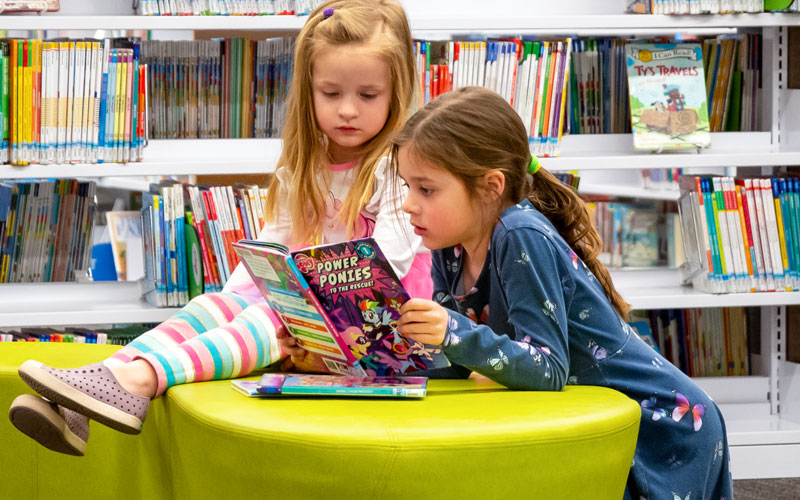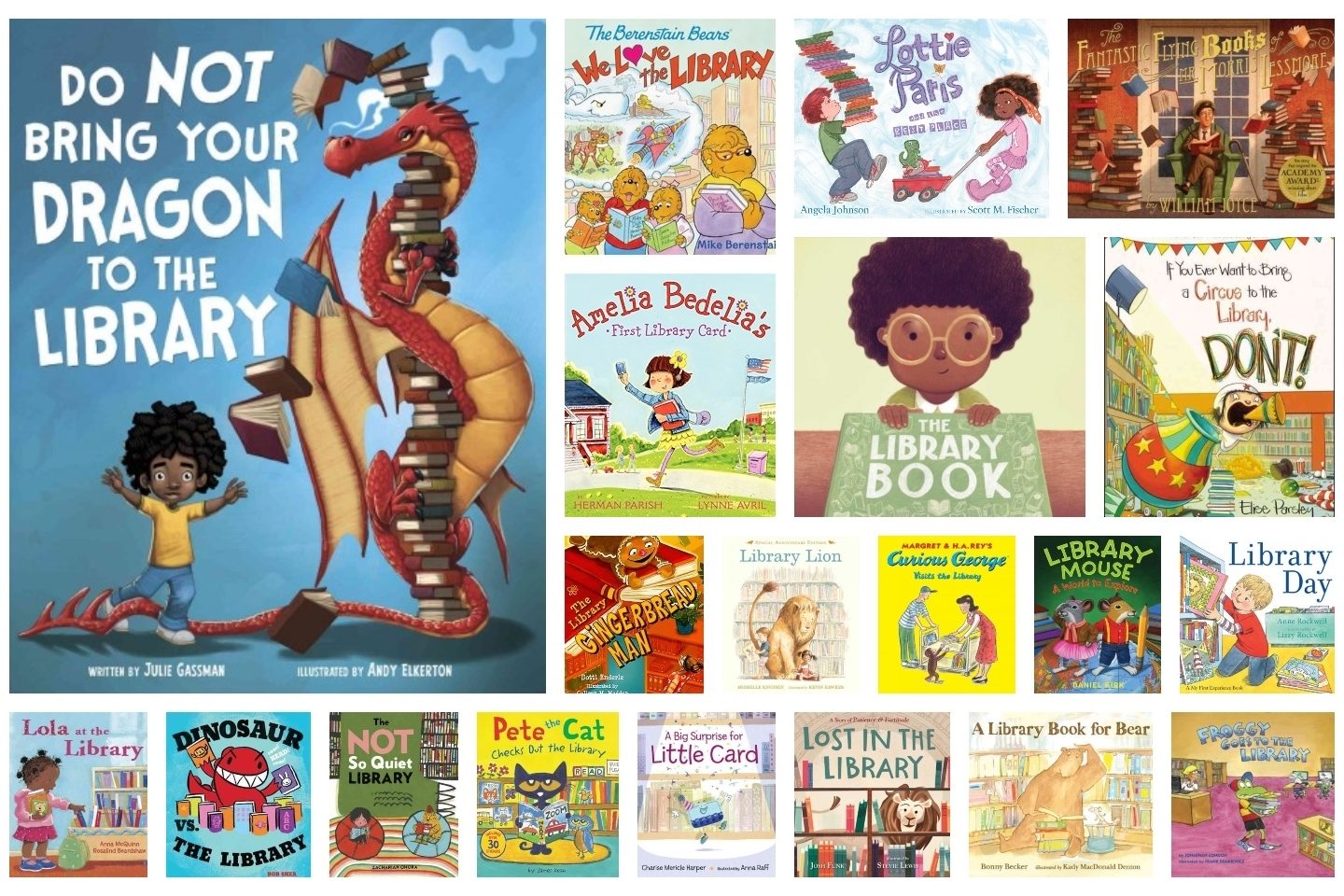The Ultimate Guide to Children's Stories
The Ultimate Guide to Children's Stories
Discover the magical world of bedtime tales, educational stories, and timeless fairy tales that inspire young minds and create lasting memories
The Magic of Children's Stories

In a world increasingly dominated by screens and digital entertainment, the timeless tradition of storytelling remains one of the most powerful tools for nurturing children's imagination, emotional development, and cognitive growth. Children's stories have been captivating young minds for centuries, serving as bridges between reality and fantasy, teaching valuable life lessons, and creating precious bonding moments between parents and children.
From the gentle lullabies whispered to newborns to the adventurous tales that transport preschoolers to magical kingdoms, children's stories play a fundamental role in shaping young personalities. They introduce concepts of right and wrong, help children understand complex emotions, and provide safe spaces to explore fears and dreams. Whether it's a classic fairy tale passed down through generations or a modern adventure story with diverse characters, each narrative contributes to a child's understanding of the world around them.
"Stories are the creative conversion of life itself into a more powerful, clearer, more meaningful experience. They are the currency of human contact." - Robert McKee
The digital age has transformed how we access and share stories, but the fundamental human need for narrative remains unchanged. Today's parents have access to an unprecedented variety of children's literature, from interactive digital books to beautifully illustrated picture books, from educational apps that teach through storytelling to traditional hardcover collections that can be treasured for generations.
This comprehensive guide explores every aspect of children's storytelling, from understanding different types of stories to creating meaningful reading routines that will benefit your child's development. We'll delve into the science behind why stories matter, provide practical tips for choosing age-appropriate content, and share strategies for making storytelling an engaging, educational experience that both children and adults will cherish.
The Science Behind Storytelling: Why Stories Matter
Language Development
Regular exposure to stories significantly enhances vocabulary, grammar understanding, and communication skills. Children who are read to frequently develop stronger linguistic abilities and better comprehension.
Cognitive Growth
Stories stimulate critical thinking, memory, and problem-solving abilities. They help children understand cause and effect, sequence events, and make logical connections.
Emotional Intelligence
Through characters and their journeys, children learn to identify emotions, develop empathy, and understand different perspectives. Stories provide safe ways to explore feelings and relationships.
Imagination & Creativity
Stories transport children to different worlds, encouraging creative thinking and imaginative play. They learn to visualize scenes, characters, and situations beyond their immediate experience.
Social Skills
Stories teach social norms, cultural values, and appropriate behaviors. Children learn about friendship, cooperation, and how to navigate social situations through character interactions.
Better Sleep & Relaxation
Bedtime stories create calming routines that signal sleep time. The rhythmic nature of reading and familiar narratives help children relax and transition peacefully to sleep.
Research-Backed Evidence

Numerous scientific studies have validated the profound impact of storytelling on child development. Research conducted by the American Academy of Pediatrics found that children who are read to regularly from an early age show significantly better academic performance, improved attention spans, and stronger social-emotional skills compared to their peers who have limited exposure to stories.
A landmark study published in the journal "Pediatrics" revealed that reading aloud to children activates areas of the brain associated with narrative comprehension and mental imagery. Brain scans showed increased activity in regions responsible for multisensory integration, suggesting that storytelling literally helps wire children's brains for better learning and comprehension.
Dr. John Hutton, a pediatrician and researcher at Cincinnati Children's Hospital, found that children who are regularly read to show stronger activation in brain areas that support reading comprehension. His research demonstrated that the simple act of reading stories aloud creates neural pathways that benefit children throughout their educational journey.
Furthermore, studies on emotional development show that children exposed to diverse stories demonstrate greater empathy and better understanding of different cultures and perspectives. This exposure to varied narratives helps create more well-rounded, emotionally intelligent individuals who are better prepared for our increasingly diverse world.
Exploring Different Types of Children's Stories
Bedtime Stories: Creating Peaceful Transitions

Bedtime stories hold a special place in children's daily routines, serving as gentle bridges between the excitement of day and the tranquility of sleep. These carefully chosen tales create a sense of security and comfort, helping children wind down from their daily activities while nurturing their imagination one last time before dreams take over.
The ideal bedtime story possesses certain characteristics that make it perfect for nighttime reading. It should be calm and soothing rather than exciting or stimulating, feature reassuring themes and happy endings, and have a gentle rhythm that mimics the natural flow toward sleep. Many classic bedtime stories incorporate elements of comfort, such as cozy homes, loving families, and peaceful resolutions to minor conflicts.
Popular Bedtime Story Themes
- Gentle Adventures: Stories where characters embark on safe, cozy journeys that end with coming home
- Friendship Tales: Narratives about caring relationships and the comfort of companionship
- Sleepy Animal Stories: Tales featuring animals preparing for sleep or having peaceful dreams
- Lullaby Stories: Rhythmic narratives that incorporate song-like elements
- Gratitude Stories: Tales that reflect on the day's blessings and express thankfulness
Research shows that children who have consistent bedtime story routines fall asleep faster and experience better quality sleep. The familiar ritual signals to the child's brain that it's time to relax, while the engaging yet calming content helps quiet racing thoughts and anxieties that might keep children awake.
Creating an effective bedtime story routine involves more than just choosing the right books. The environment should be calm and dimly lit, the reading voice should be soft and soothing, and the timing should allow for the full story without rushing. Many families find that reading two or three short stories or one longer tale works best, giving children enough narrative satisfaction while maintaining appropriate bedtime timing.
Fairy Tales: Timeless Magic and Universal Wisdom

Fairy tales represent one of humanity's oldest and most enduring forms of storytelling, carrying within their magical narratives profound truths about human nature, moral choices, and the triumph of good over evil. These timeless stories have survived centuries of retelling precisely because they address universal themes and emotions that resonate across cultures and generations.
The appeal of fairy tales lies in their ability to present complex life lessons through simple, memorable narratives filled with magical elements that capture children's imagination. Dragons, fairies, talking animals, and enchanted objects serve as vehicles for exploring real-world concepts like courage, kindness, perseverance, and justice. Through these fantastical elements, children can safely explore fears, desires, and moral dilemmas in a context that feels both distant and relevant.
Classic Fairy Tales
- • Cinderella - Perseverance and kindness
- • Snow White - Inner beauty and friendship
- • Little Red Riding Hood - Caution and wisdom
- • The Three Little Pigs - Hard work and preparation
- • Jack and the Beanstalk - Bravery and adventure
- • Sleeping Beauty - Patience and true love
Modern Fairy Tale Adaptations
- • Updated cultural contexts
- • Diverse character representations
- • Gender-inclusive storylines
- • Contemporary moral lessons
- • Interactive digital versions
- • Multilingual adaptations
Modern interpretations of classic fairy tales have evolved to reflect contemporary values while maintaining the essential magic that makes these stories special. Today's versions often feature more diverse characters, stronger female protagonists, and updated moral frameworks that speak to current social awareness. These adaptations ensure that fairy tales remain relevant and accessible to new generations while preserving their fundamental wisdom.
Psychologist Bruno Bettelheim argued that fairy tales help children process unconscious fears and desires, providing symbolic solutions to internal conflicts. The happy endings characteristic of fairy tales offer children hope and reassurance that challenges can be overcome, good intentions are rewarded, and justice ultimately prevails. This psychological benefit makes fairy tales particularly valuable for children facing their own developmental challenges and uncertainties.
Educational Stories: Learning Through Narrative

Educational stories represent a powerful fusion of entertainment and learning, demonstrating that education doesn't have to be boring or formal to be effective. These narratives seamlessly integrate academic concepts, life skills, and moral lessons into engaging plots that children eagerly absorb. The key to successful educational storytelling lies in making the learning feel natural and enjoyable rather than forced or preachy.
The most effective educational stories work on multiple levels simultaneously. While children are engaged with the plot and characters, they're unconsciously absorbing information about science, history, mathematics, social studies, or emotional intelligence. This multi-layered approach ensures that learning sticks because it's connected to emotional investment in the story's outcome.
Categories of Educational Stories
Academic Subjects
- • Math adventures with number characters
- • Science experiments through story
- • Historical tales and biographies
- • Geography through travel narratives
- • Language learning stories
Life Skills & Values
- • Emotional regulation and mindfulness
- • Social skills and friendship
- • Problem-solving strategies
- • Cultural awareness and diversity
- • Environmental consciousness
One of the greatest advantages of educational stories is their ability to make abstract concepts concrete and relatable. Complex scientific principles become understandable when explained through the adventures of curious characters. Historical events gain emotional resonance when children can identify with the people who lived through them. Mathematical concepts make sense when they're part of solving problems that characters face.
The digital age has revolutionized educational storytelling, offering interactive books that respond to children's choices, augmented reality experiences that bring stories to life, and personalized narratives that adapt to individual learning needs. However, the fundamental principle remains unchanged: the best educational stories are those that prioritize good storytelling while naturally incorporating learning opportunities.
Moral Stories: Building Character Through Narrative

Moral stories serve as gentle teachers, imparting valuable life lessons about ethics, character, and proper conduct without resorting to lectures or direct instruction. These narratives present moral dilemmas and their consequences through relatable characters and situations, allowing children to internalize important values naturally while enjoying engaging stories.
The power of moral stories lies in their ability to present complex ethical concepts in age-appropriate ways. Young children can understand concepts like honesty, kindness, and fairness through simple tales, while older children can grapple with more nuanced moral questions through sophisticated narratives. This progressive complexity ensures that moral storytelling remains relevant and impactful throughout childhood development.
Key Moral Themes in Children's Stories
Stories about the importance of telling the truth and the consequences of deception
Tales celebrating empathy, helping others, and showing care for those in need
Narratives about working hard, not giving up, and achieving goals through dedication
Stories exploring what it means to be a good friend and the value of relationships
Tales promoting understanding, acceptance of differences, and treating others well
Stories showing how actions have results and the importance of making good choices
Traditional fables like Aesop's tales remain popular because they distill complex moral lessons into memorable, often humorous stories. "The Tortoise and the Hare" teaches about perseverance and humility, while "The Boy Who Cried Wolf" demonstrates the importance of honesty and credibility. These timeless stories continue to resonate because they address fundamental human behaviors and their consequences.
Modern moral stories have expanded to address contemporary issues like environmental responsibility, digital citizenship, cultural diversity, and emotional intelligence. These updated narratives help children navigate the complexities of modern life while maintaining the essential function of character development that has always been central to moral storytelling.
The Art of Picture Books: Visual Storytelling at Its Best

Picture books represent a unique art form that combines visual and textual storytelling to create immersive experiences that engage multiple senses simultaneously. These carefully crafted works demonstrate that the integration of illustration and text can create meaning that transcends what either element could achieve alone. For young readers, picture books serve as their first introduction to the magic of literature and the power of visual narrative.
The relationship between text and illustration in quality picture books is symbiotic rather than merely decorative. The best picture books use their visual elements to expand the story, provide additional information, convey emotions, and create atmosphere that enhances the reading experience. Children learn to "read" these visual cues, developing important skills in interpretation, observation, and critical thinking.
Benefits of Picture Books
- Visual Literacy: Children learn to interpret images, understand visual symbols, and make connections between pictures and text
- Comprehension Support: Illustrations help children understand story elements, character emotions, and setting details
- Engagement: Beautiful artwork captivates attention and makes reading a more enjoyable experience
- Memory Aid: Visual elements help children remember story details and sequence events
- Discussion Starters: Rich illustrations provide countless opportunities for conversation and questions
What Makes Great Picture Books
- Artistic Quality: Beautiful, expressive illustrations that enhance the story
- Text-Image Harmony: Perfect balance where neither element overshadows the other
- Age Appropriateness: Content and complexity matched to developmental stages
- Emotional Resonance: Stories and images that connect with children's experiences and feelings
- Technical Excellence: High-quality printing, durable binding, and thoughtful design
The evolution of picture book creation has been remarkable, with advances in printing technology allowing for more sophisticated color reproduction and artistic techniques. Contemporary picture books showcase diverse artistic styles, from traditional watercolors and pencil drawings to digital art and mixed media creations. This variety ensures that there are picture books to appeal to every aesthetic preference and cultural background.
Research has shown that children who are exposed to high-quality picture books develop stronger visual processing skills, better attention to detail, and more sophisticated understanding of narrative structure. These skills translate into better performance across academic subjects and enhanced creativity in their own artistic and written expression.
Creating Your Family's Story Collection

Building a Diverse and Engaging Collection
Creating a home library for children involves more than simply accumulating books; it requires thoughtful curation that reflects your family's values, interests, and cultural background while ensuring broad exposure to diverse perspectives and high-quality literature. A well-planned home library becomes a treasure trove of adventures, learning opportunities, and comfort that children can access whenever inspiration strikes.
Ages 0-2
- • Board books with simple images
- • Touch-and-feel books
- • Books with photographs of babies
- • Simple nursery rhymes
- • High-contrast black and white books
Ages 2-4
- • Simple picture books with clear plots
- • Interactive books with flaps or sounds
- • Books about daily routines
- • Simple concept books (colors, shapes, numbers)
- • Books featuring familiar objects and animals
Ages 4-6
- • Complex picture books with detailed illustrations
- • Beginning reader books
- • Classic fairy tales and folktales
- • Non-fiction books on topics of interest
- • Books with diverse characters and settings
Selecting Quality Literature
The quality of children's literature varies dramatically, and discerning parents benefit from understanding what distinguishes exceptional books from merely adequate ones. Award-winning books, such as Caldecott Medal winners for picture books and Newbery Medal winners for children's literature, provide excellent starting points for building a collection of high-quality titles.
Quality Indicators to Look For
Story Elements
- • Engaging, age-appropriate plot
- • Well-developed, relatable characters
- • Clear beginning, middle, and end
- • Meaningful themes and messages
- • Rich, descriptive language
Production Quality
- • High-quality illustrations and design
- • Durable binding and materials
- • Clear, readable typography
- • Appropriate book size and format
- • Thoughtful layout and pacing
Organizing and Maintaining Your Collection
A well-organized home library encourages independent browsing and helps children develop a sense of ownership over their reading choices. Consider organizing books by category, reading level, or theme, and make sure children can easily access their favorites. Regular rotation of displayed books keeps the collection fresh and exciting, while proper storage protects valuable books for future generations.
Budget-conscious families can build impressive collections through strategic purchasing at book sales, library sales, used bookstores, and online marketplaces. Book subscription services, birthday and holiday gifts focused on literature, and exchanges with other families also help expand collections affordably. Remember that a smaller collection of beloved, high-quality books is more valuable than a large collection of mediocre titles.
Interactive and Digital Storytelling in the Modern Age

The digital revolution has transformed storytelling in ways that previous generations could never have imagined. Interactive and digital stories now offer immersive experiences that engage multiple senses, respond to reader choices, and create personalized narratives that adapt to individual preferences and learning needs. While traditional books remain irreplaceable, digital storytelling tools have opened exciting new possibilities for engaging young readers and enhancing comprehension.
Modern interactive stories can include animations that bring characters to life, sound effects that enhance atmosphere, and interactive elements that allow children to influence plot development. These features transform passive reading into active participation, helping maintain attention and increasing emotional investment in the story's outcome. Research suggests that when used appropriately, these interactive elements can enhance rather than distract from the core storytelling experience.
Digital Story Formats
- Interactive eBooks: Digital books with clickable elements, animations, and sound effects
- Story Apps: Dedicated applications designed around specific stories or series
- Audiobook Companions: Visual elements that accompany narrated stories
- Choose-Your-Adventure: Stories where readers make decisions that affect outcomes
- Augmented Reality: Books that come to life through AR technology
Benefits of Interactive Stories
- Enhanced Engagement: Interactive elements maintain attention and interest
- Personalized Learning: Adaptive content that matches individual reading levels
- Immediate Feedback: Interactive elements provide instant responses to reader actions
- Multimedia Learning: Combines visual, auditory, and tactile learning modalities
- Accessibility Features: Text-to-speech, adjustable fonts, and other accommodations
Balancing Digital and Traditional Stories
While digital storytelling offers exciting possibilities, experts emphasize the importance of maintaining balance between screen-based and traditional book experiences. Physical books provide unique benefits including tactile experiences, the ability to flip back and forth through pages, and freedom from screen-related distractions. The goal should be to use digital tools to enhance rather than replace traditional literacy experiences.
"Technology should amplify human capability, not replace human connection. The best digital stories are those that bring families together rather than isolating children with devices." - Dr. Lisa Guernsey, Technology and Learning Expert
Successful integration of digital storytelling involves thoughtful selection of high-quality apps and eBooks that prioritize story content over flashy effects. Parents should look for digital stories that encourage interaction and discussion, offer educational value beyond entertainment, and provide options for different reading levels and interests.
The future of storytelling will likely continue blending traditional and digital elements, creating hybrid experiences that combine the best of both worlds. Virtual reality storytelling, AI-powered personalized narratives, and collaborative storytelling platforms represent emerging trends that may reshape how children experience stories in the coming decades.
Establishing Family Storytelling Traditions

The Power of Routine in Storytelling
Establishing consistent storytelling traditions creates anticipation, security, and special bonding moments that children will treasure throughout their lives. These traditions don't need to be elaborate or expensive; they simply need to be regular, meaningful, and enjoyable for all family members involved. The key is creating predictable opportunities for story sharing that become integral parts of family life.
Research consistently shows that children thrive on routine and predictability, and storytelling traditions fulfill this need while simultaneously promoting literacy, creativity, and family connection. Whether it's a nightly bedtime story, weekend reading marathons, or special holiday storytelling sessions, these traditions create frameworks for meaningful interaction and shared experiences.
Daily Traditions
- • Bedtime story ritual
- • Morning story with breakfast
- • After-school story time
- • Car ride audiobooks
- • Quiet time reading
Weekly Traditions
- • Family library visits
- • Weekend reading marathons
- • Story-themed craft projects
- • Storytelling circles
- • Reading picnics
Special Occasions
- • Birthday story selections
- • Holiday-themed readings
- • Seasonal story festivals
- • Family story writing
- • Story-themed parties
Making Stories Come Alive
Effective storytelling involves more than simply reading words on a page; it requires bringing stories to life through voice, expression, and engagement. Parents don't need professional acting skills to be effective storytellers – enthusiasm, different character voices, and genuine enjoyment of the story are far more important than perfect technique.

Storytelling Enhancement Tips
Voice and Expression
- • Use different voices for different characters
- • Vary pace and volume for dramatic effect
- • Add sound effects and expressions
- • Use facial expressions and gestures
- • Pause for suspense and emphasis
Interactive Elements
- • Ask prediction questions
- • Encourage child participation
- • Let children fill in familiar phrases
- • Discuss illustrations and details
- • Connect stories to child's experiences
Creating comfortable, distraction-free environments enhances the storytelling experience significantly. This might involve designated reading spaces with comfortable seating, appropriate lighting, and minimal distractions. Some families create special storytelling atmospheres with soft blankets, dim lighting, or even tent-like reading nooks that make story time feel magical and special.
Remember that storytelling traditions should evolve as children grow and interests change. What works for toddlers may not engage school-age children, and successful traditions adapt to accommodate developmental changes while maintaining their essential character and meaning within family life.
The Future of Children's Stories and Storytelling

As we look toward the future of children's literature and storytelling, we see exciting developments that promise to make stories more accessible, inclusive, and engaging than ever before. Technological advances, changing social awareness, and evolving educational philosophies are reshaping how stories are created, distributed, and experienced by young readers around the world.
Artificial intelligence and machine learning are beginning to enable personalized storytelling experiences that adapt to individual children's interests, reading levels, and learning needs. These technologies can create customized narratives that feature children as protagonists, incorporate their favorite themes and characters, and adjust complexity based on comprehension levels. While these innovations offer exciting possibilities, they also raise important questions about the role of human creativity and connection in storytelling.
Global Accessibility
Digital platforms are making high-quality children's literature accessible to children regardless of geographic location or economic circumstances. Online libraries, free digital book programs, and translation technologies are breaking down barriers that have historically limited access to diverse, quality literature.
- • Multilingual story platforms
- • Free digital library access
- • Cultural exchange programs
- • Remote storytelling sessions
Inclusive Representation
The future of children's literature prioritizes diverse voices, characters, and perspectives. Publishers and authors are increasingly committed to ensuring that all children can see themselves reflected in the stories they read while learning about others different from themselves.
- • Diverse author initiatives
- • Multicultural character development
- • Accessibility-focused design
- • Community-driven storytelling
Emerging Technologies in Storytelling
Virtual and augmented reality technologies are creating immersive storytelling experiences that allow children to literally step inside their favorite stories. These technologies can transport young readers to different worlds, let them interact with beloved characters, and experience narratives from multiple perspectives. While still in early stages, these innovations show tremendous potential for enhancing engagement and comprehension.
Emerging Story Technologies
Immersive experiences that place children inside story worlds, allowing them to explore environments and interact with characters in three-dimensional spaces.
Artificial intelligence that creates customized stories based on children's interests, reading levels, and emotional needs.
Platforms that allow children to create stories together, building narratives collaboratively with peers around the world.
Technology that monitors emotional responses and adjusts story elements to maintain optimal engagement and emotional connection.
Preserving the Human Element
Despite technological advances, experts emphasize that the most important elements of storytelling – human connection, emotional resonance, and imaginative engagement – must remain central to children's story experiences. Technology should enhance rather than replace the fundamental human aspects of storytelling that have made stories powerful tools for learning and bonding throughout human history.
The future of children's storytelling will likely blend the best of traditional and innovative approaches, creating rich, accessible, and meaningful experiences that honor the timeless power of narrative while embracing the possibilities offered by new technologies and evolving social awareness.
Begin Your Family's Storytelling Journey Today
Stories have the power to transform childhood, strengthen family bonds, and create lasting memories that children will carry into adulthood. Every story shared, every book read together, and every moment spent in the magical world of narrative contributes to a child's development and well-being.
Start Today
Choose one story to read tonight and begin building your family's storytelling tradition
Make It Regular
Establish consistent storytelling times that become cherished parts of your family routine
Embrace the Magic
Remember that the real magic happens in the connection between storyteller and listener
Ready for More Magical Stories?
Discover our carefully curated collection of enchanting bedtime stories, educational tales, and magical adventures designed to inspire young minds and create precious family moments.
Explore Magical Bedtime StoriesThe journey of a thousand stories begins with a single page. Start creating magical memories with your children today, and watch as the power of storytelling transforms not just bedtime, but your entire family's relationship with learning, imagination, and each other.
Continue Your Storytelling Journey
Perfect Bedtime Routines
Discover how to create calming bedtime routines that incorporate storytelling for better sleep and stronger family bonds.
Educational Story Activities
Learn creative ways to extend story experiences through crafts, games, and educational activities that reinforce learning.
Cultural Stories Around the World
Explore folktales and stories from different cultures to broaden your child's understanding of the world's diversity.
Creating Your Own Stories
Tips and techniques for writing original stories with your children, fostering creativity and personal expression.
Digital Storytelling Tools
Reviews and recommendations for the best digital storytelling apps, platforms, and interactive books for children.
Building Home Libraries
Practical advice for selecting, organizing, and maintaining a diverse collection of children's books on any budget.
